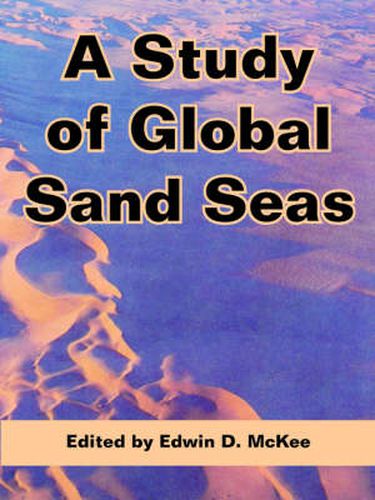Readings Newsletter
Become a Readings Member to make your shopping experience even easier.
Sign in or sign up for free!
You’re not far away from qualifying for FREE standard shipping within Australia
You’ve qualified for FREE standard shipping within Australia
The cart is loading…






This title is printed to order. This book may have been self-published. If so, we cannot guarantee the quality of the content. In the main most books will have gone through the editing process however some may not. We therefore suggest that you be aware of this before ordering this book. If in doubt check either the author or publisher’s details as we are unable to accept any returns unless they are faulty. Please contact us if you have any questions.
Early descriptions and considerations of the characteristics of modern eolian sand deposits, mostly in the great sand seas of the world, date back to the 1880’s and 1890’s, when pioneer geologists and explorers wrote their classic papers on desert dunes. One or two decades later, interest in eolian processes greatly increased when wind-formed deposits were recognized in ancient sandstones in many parts of the world and in rocks of many ages. Throughout the 20th century, as the science of geology has expanded and the programs of the U.S. Geological Survey have proliferated to keep pace, dune studies have had a similar growth. Work was initially concentrated mostly on the description of dune forms or morphology and on analysis of textural features; by midcentury, however, major contributions had been made to the physics of eolian sand by detailed studies and interpretations of minor eolian structures, by statistical analyses of cross-strata dip directions, and by the development of systems for dune classification. Most recently, interest has been renewed in detailed grain studies, in the study of cross-strata, and in interpretation of dune patterns by means of aerial photographs and Landsat imagery. A major feature of this report on global sand seas is the compilation and comparison of available data based on many different methods of investigation. The application of these studies to economic problems, which is described in one chapter, clearly illustrates the importance of eolian deposits to our present culture and to human welfare. H. William Menard Director, U.S. Geological Survey
$9.00 standard shipping within Australia
FREE standard shipping within Australia for orders over $100.00
Express & International shipping calculated at checkout
This title is printed to order. This book may have been self-published. If so, we cannot guarantee the quality of the content. In the main most books will have gone through the editing process however some may not. We therefore suggest that you be aware of this before ordering this book. If in doubt check either the author or publisher’s details as we are unable to accept any returns unless they are faulty. Please contact us if you have any questions.
Early descriptions and considerations of the characteristics of modern eolian sand deposits, mostly in the great sand seas of the world, date back to the 1880’s and 1890’s, when pioneer geologists and explorers wrote their classic papers on desert dunes. One or two decades later, interest in eolian processes greatly increased when wind-formed deposits were recognized in ancient sandstones in many parts of the world and in rocks of many ages. Throughout the 20th century, as the science of geology has expanded and the programs of the U.S. Geological Survey have proliferated to keep pace, dune studies have had a similar growth. Work was initially concentrated mostly on the description of dune forms or morphology and on analysis of textural features; by midcentury, however, major contributions had been made to the physics of eolian sand by detailed studies and interpretations of minor eolian structures, by statistical analyses of cross-strata dip directions, and by the development of systems for dune classification. Most recently, interest has been renewed in detailed grain studies, in the study of cross-strata, and in interpretation of dune patterns by means of aerial photographs and Landsat imagery. A major feature of this report on global sand seas is the compilation and comparison of available data based on many different methods of investigation. The application of these studies to economic problems, which is described in one chapter, clearly illustrates the importance of eolian deposits to our present culture and to human welfare. H. William Menard Director, U.S. Geological Survey